Abstract
Four rats were trained in darkness on a free-operant avoidance procedure in which shocks occurred randomly, but lever presses could reduce their frequency. Discrimination training followed, during which responses in light continued to reduce shock frequency, but responses in darkness had no effect. During each cycle, the light period was 4 min, while darkness lasted only until a 20-sec interval had elapsed without a response. This no-response requirement was increased to 40 sec for three animals and eventually to 60 sec for two of them. Discriminative control developed, despite a greater shock density in the dark, with response rate and number of responses per shock maintained or increasing during light and decreasing to very low values in darkness. Two animals were later exposed to a procedure in which shock density was unaffected by responding either in light or darkness. A 60-sec no-response requirement was continued in the dark. Discriminative control persisted through 42 sessions for one animal and required 45 sessions to approach extinction for the other animal. The role of the light as a potential conditioned reinforcer of other behavior in the dark was implicated in the development and persistence of discriminative control. These data support shock-frequency reduction as reinforcement for avoidance behavior.
Full text
PDF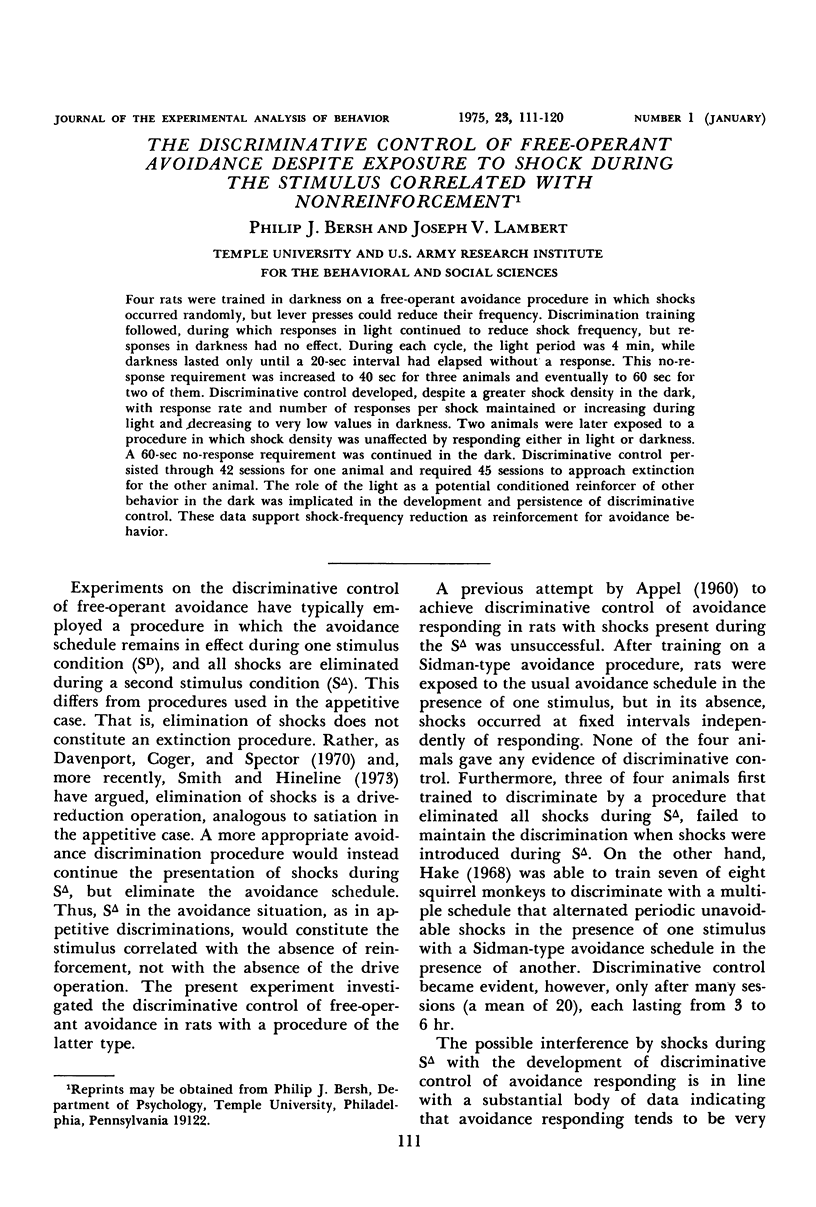
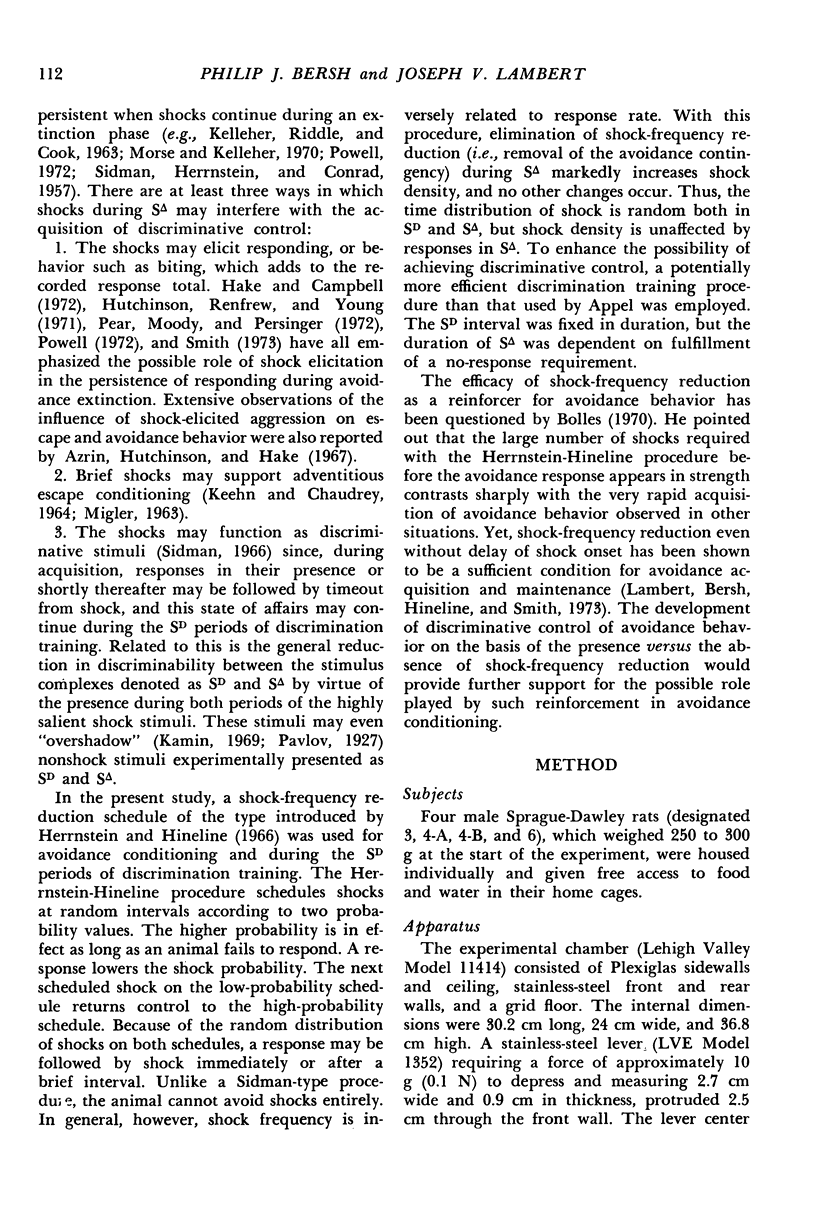

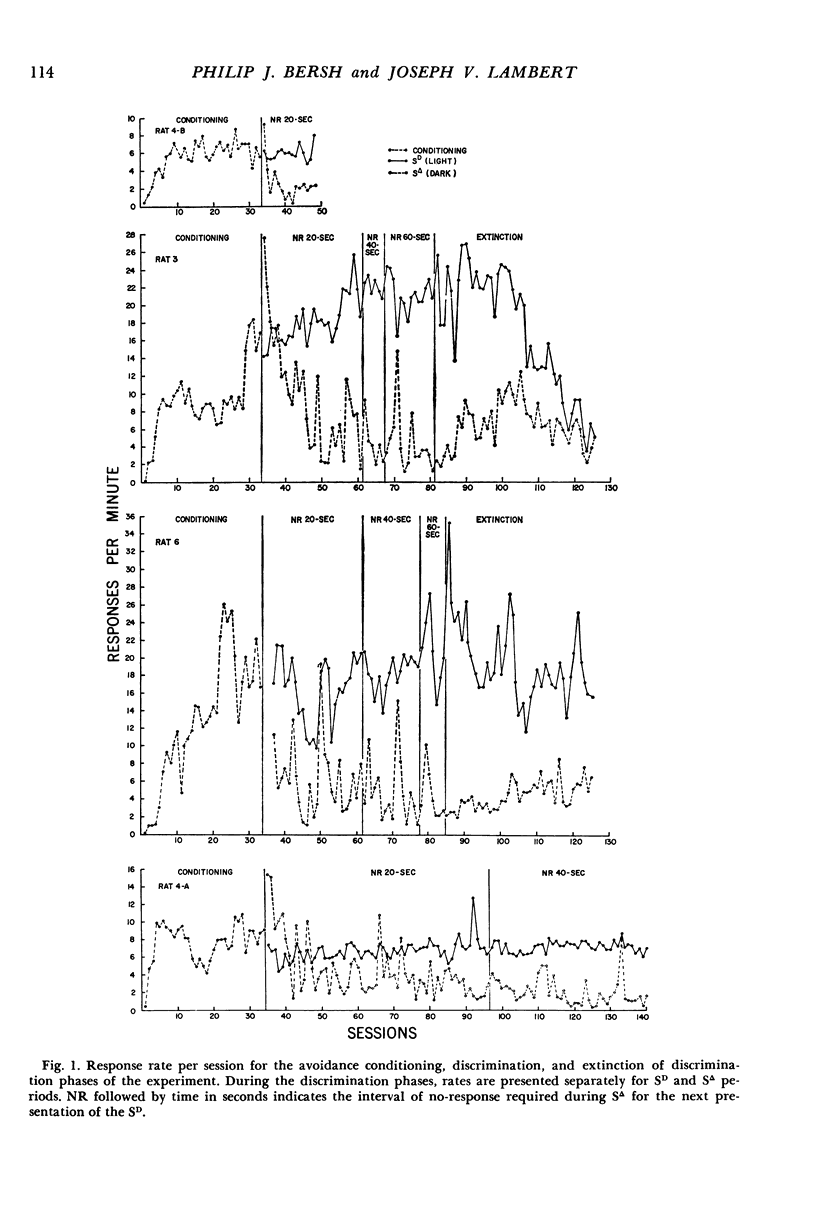
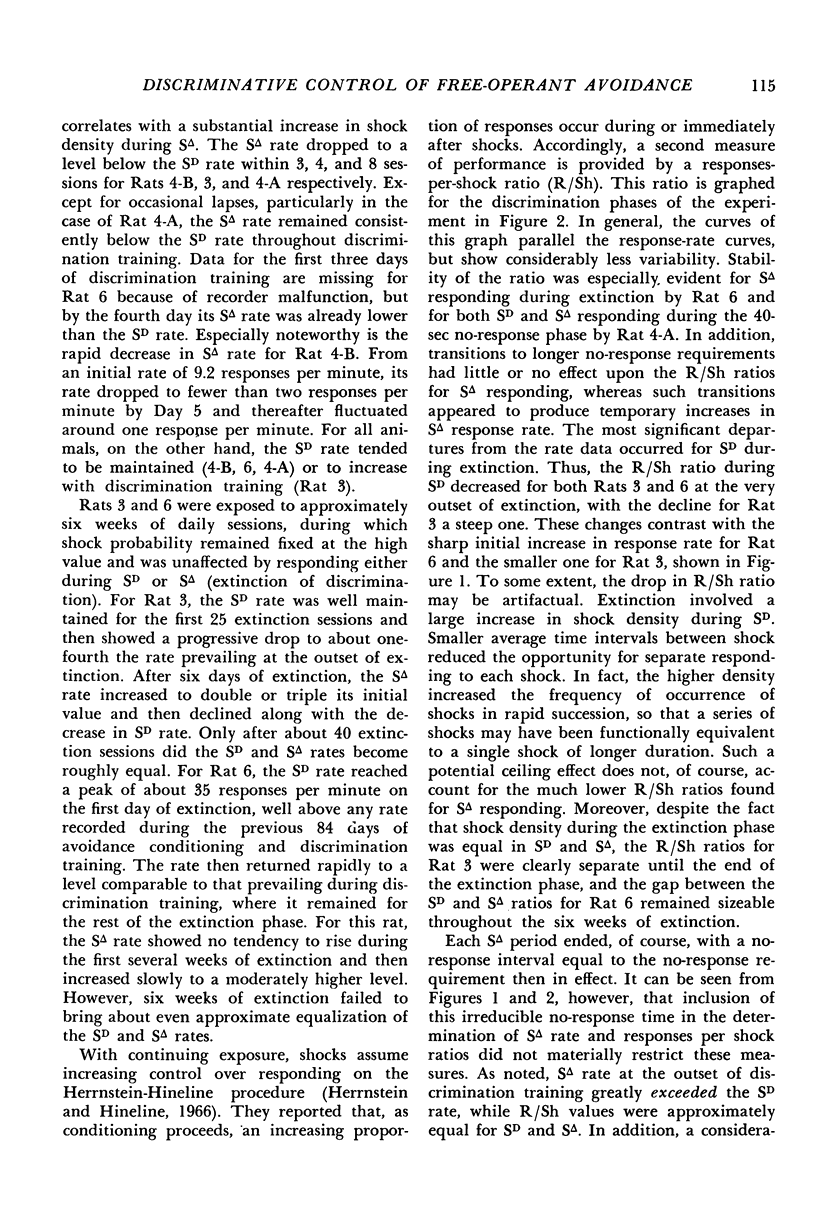
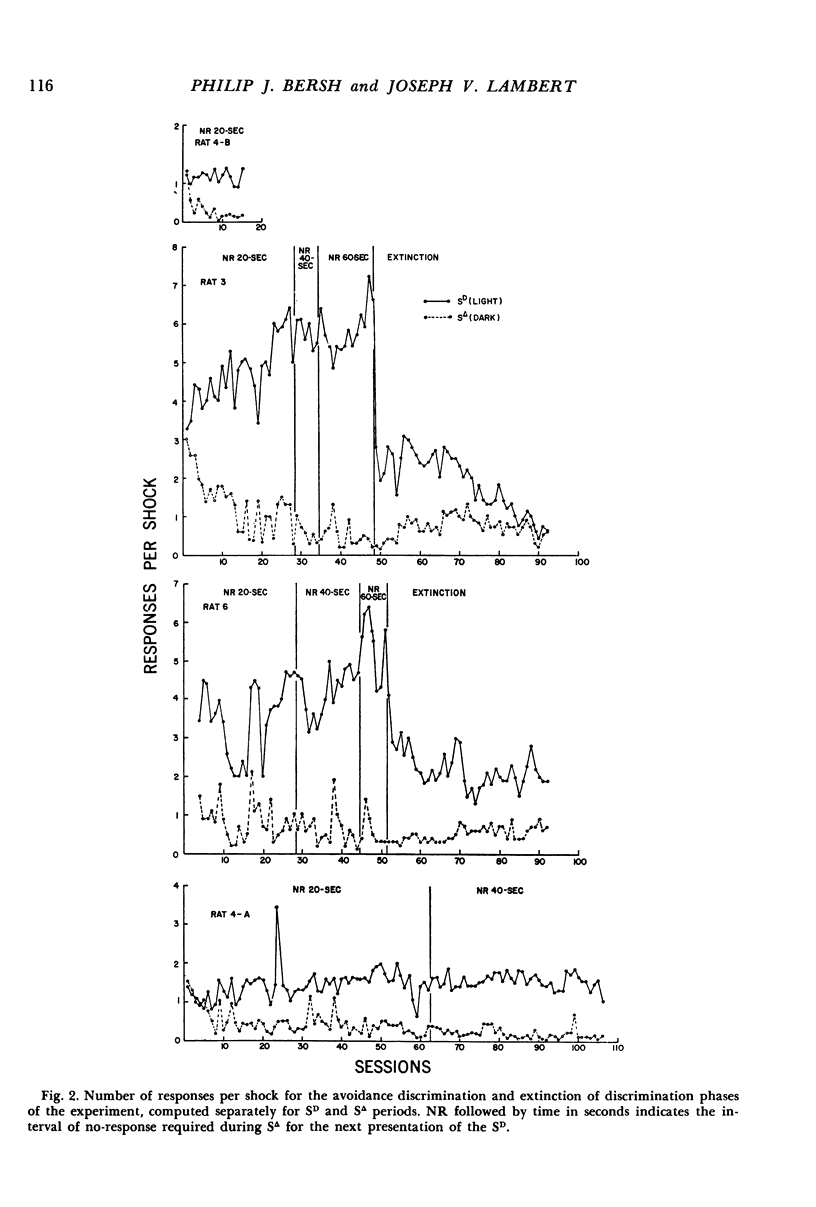

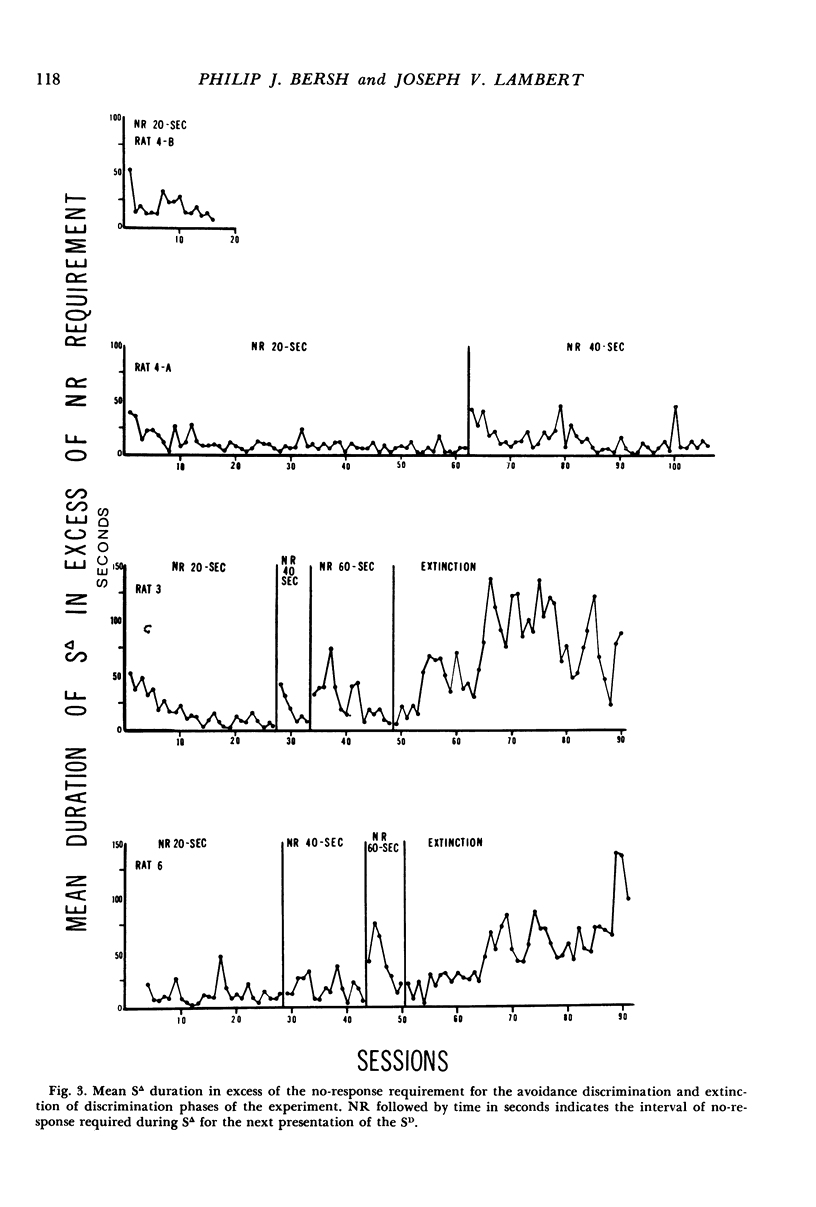
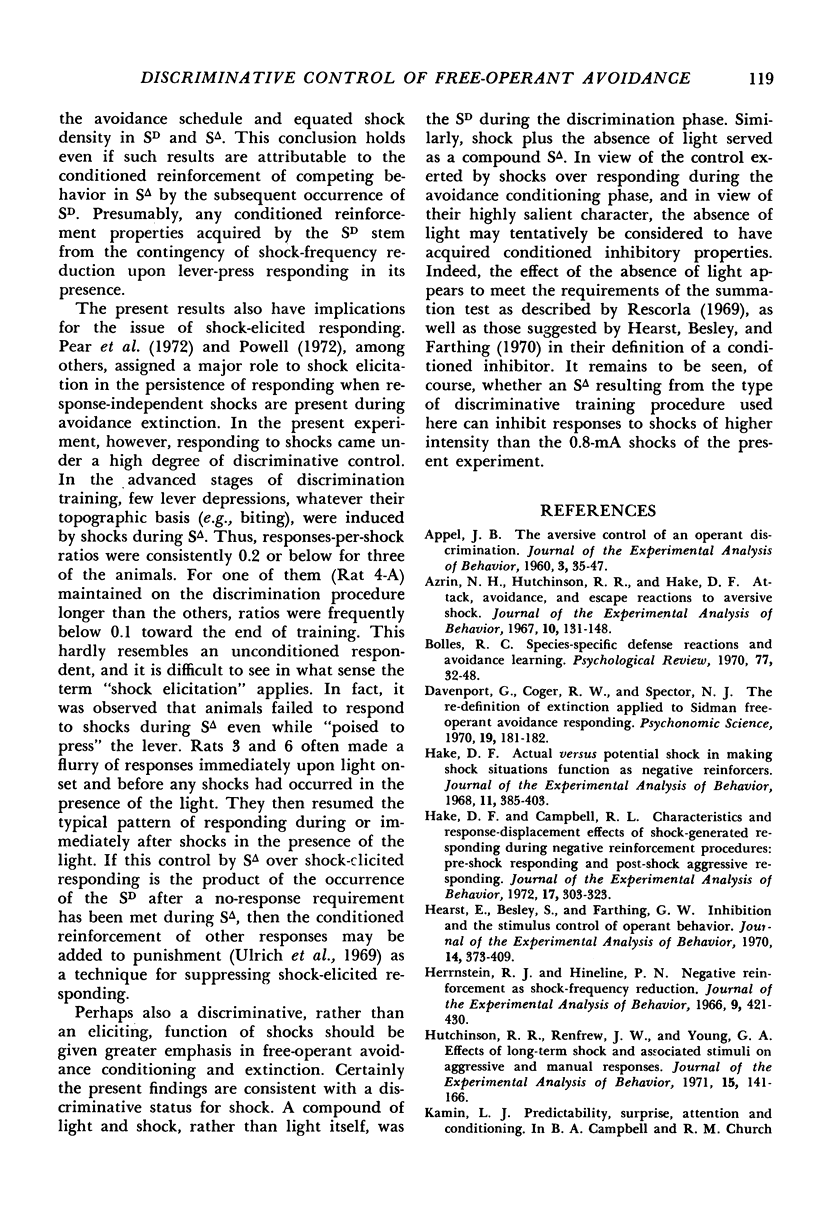
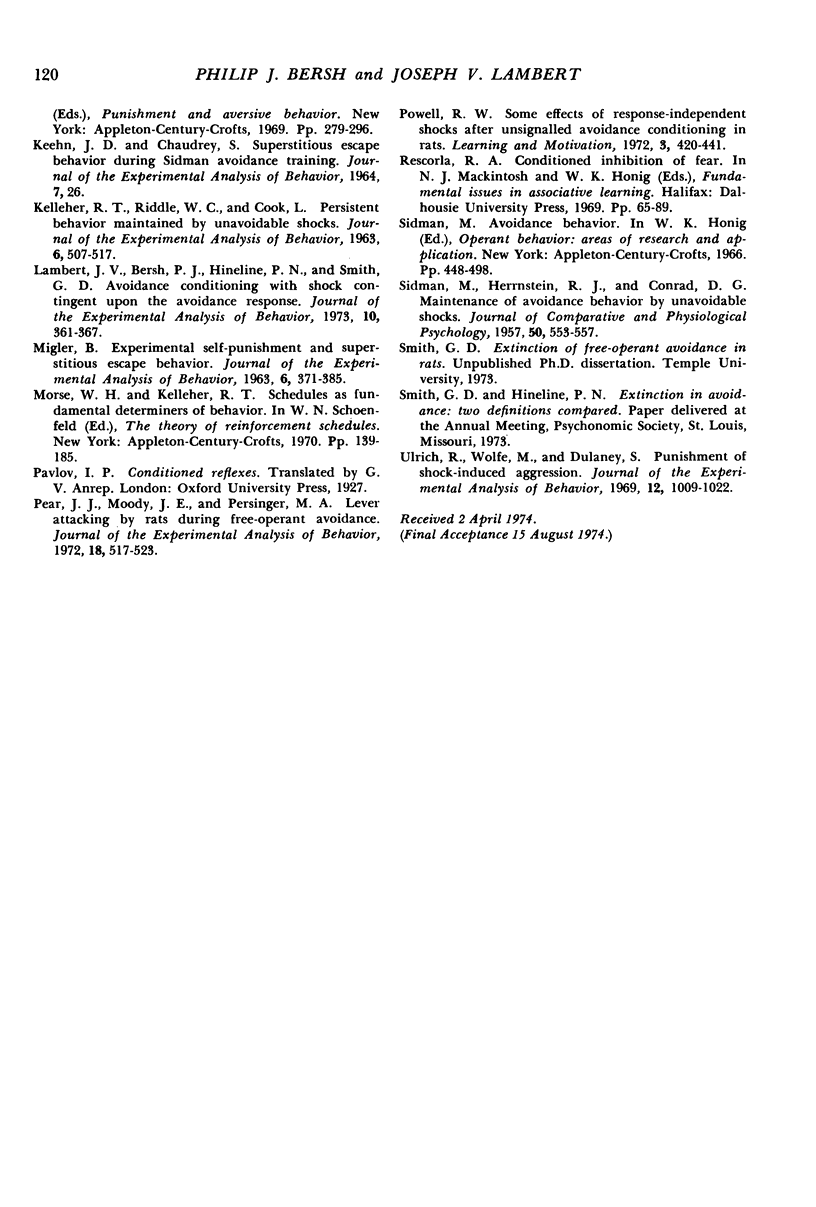
Selected References
These references are in PubMed. This may not be the complete list of references from this article.
- Appel J. B. The Aversive Control of an Operant Discrimination. J Exp Anal Behav. 1960 Jan;3(1):35–47. doi: 10.1901/jeab.1960.3-35. [DOI] [PMC free article] [PubMed] [Google Scholar]
- Azrin N. H., Hutchinson R. R., Hake D. F. Attack, avoidance, and escape reactions to aversive shock. J Exp Anal Behav. 1967 Mar;10(2):131–148. doi: 10.1901/jeab.1967.10-131. [DOI] [PMC free article] [PubMed] [Google Scholar]
- Hake D. F. Actual versus potential shock in making shock situations function as negative reinforcers. J Exp Anal Behav. 1968 Jul;11(4):385–403. doi: 10.1901/jeab.1968.11-385. [DOI] [PMC free article] [PubMed] [Google Scholar]
- Hake D. F., Campbell R. L. Characteristics and response-displacement effects of shock-generated responding during negative reinforcement procedures: pre-shock responding and post-shock aggressive responding. J Exp Anal Behav. 1972 May;17(3):303–323. doi: 10.1901/jeab.1972.17-303. [DOI] [PMC free article] [PubMed] [Google Scholar]
- Hearst E., Besley S., Farthing G. W. Inhibition and the stimulus control of operant behavior. J Exp Anal Behav. 1970 Nov;14(3 Pt 2 Suppl):373–409. doi: 10.1901/jeab.1970.14-s373. [DOI] [PMC free article] [PubMed] [Google Scholar]
- Herrnstein R. J., Hineline P. N. Negative reinforcement as shock-frequency reduction. J Exp Anal Behav. 1966 Jul;9(4):421–430. doi: 10.1901/jeab.1966.9-421. [DOI] [PMC free article] [PubMed] [Google Scholar]
- Hutchinson R. R., Renfrew J. W., Young G. A. Effects of long-term shock and associated stimuli on aggressive and manual responses. J Exp Anal Behav. 1971 Mar;15(2):141–166. doi: 10.1901/jeab.1971.15-141. [DOI] [PMC free article] [PubMed] [Google Scholar]
- KEEHN J. D., CHAUDREY S. SUPERSTITIOUS ESCAPE BEHAVIOR DURING SIDMAN AVOIDANCE TRAINING. J Exp Anal Behav. 1964 Jan;7:26–26. doi: 10.1901/jeab.1964.7-26. [DOI] [PMC free article] [PubMed] [Google Scholar]
- KELLEHER R. T., RIDDLE W. C., COOK L. PERSISTENT BEHAVIOR MAINTAINED BY UNAVOIDABLE SHOCKS. J Exp Anal Behav. 1963 Oct;6:507–517. doi: 10.1901/jeab.1963.6-507. [DOI] [PMC free article] [PubMed] [Google Scholar]
- Lambert J. V., Bersh P. J., Hineline P. N., Smith G. D. Avoidance conditioning with shock contingent upon the avoidance response. J Exp Anal Behav. 1973 Mar;19(2):361–367. doi: 10.1901/jeab.1973.19-361. [DOI] [PMC free article] [PubMed] [Google Scholar]
- MIGLER B. Experimental self-punishment and superstitious escape behavior. J Exp Anal Behav. 1963 Jul;6:371–385. doi: 10.1901/jeab.1963.6-371. [DOI] [PMC free article] [PubMed] [Google Scholar]
- Pear J. J., Moody J. E., Persinger M. A. Lever attacking by rats during free-operant avoidance. J Exp Anal Behav. 1972 Nov;18(3):517–523. doi: 10.1901/jeab.1972.18-517. [DOI] [PMC free article] [PubMed] [Google Scholar]
- SIDMAN M., HERRNSTEIN R. J., CONRAD D. G. Maintenance of avoidance behavior by unavoidable shocks. J Comp Physiol Psychol. 1957 Dec;50(6):553–557. doi: 10.1037/h0043500. [DOI] [PubMed] [Google Scholar]
- Ulrich R., Wolfe M., Dulaney S. Punishment of shock-induced aggression. J Exp Anal Behav. 1969 Nov;12(6):1009–1015. doi: 10.1901/jeab.1969.12-1009. [DOI] [PMC free article] [PubMed] [Google Scholar]


